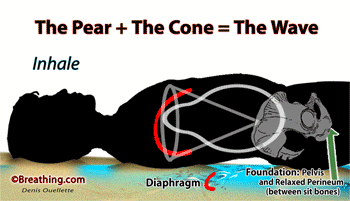Our modern medical paradigm bases pulmonary function on factors that relate to the anatomy and physiology of the lungs. At times, the mechanical relationships of the chest cavity and of the diaphragm are considered important, but for the most part, they are rarely considered in the ordinary management of most pulmonary diseases such as emphysema, asthma, and restrictive lung disorders.
The bulk of our management of these kinds of disorders is aimed at pharmacological intervention. While this is a reasonable approach that often is quite valuable, it fails to appreciate the potential role of posture, rib flexibility or diaphragmatic excursion as independent factors that can improve lung function. This can be life saving to people with severe pulmonary insufficiency.
It would be unheard of in the development of opera singing, powerful public speaking, or world-class athletics to ignore the importance of respiratory faults, accessory breathing muscles, and breathing coordination. When the pulmonary reserves of these highly trained specialists are examined, they are clearly superior to that of the average, untrained population. There have been but few clinical studies undertaken to explore the seemingly obvious benefits of this kind of training..
It seems prudent to me to explore this safe, non-invasive, and easily taught approach, to patients who are willing to invest a minimum of money and time especially when the potential for a negative effect with selected exercises is zero. When conventional therapies have little or nothing to offer, searching for additional possibilities becomes our responsibility.















